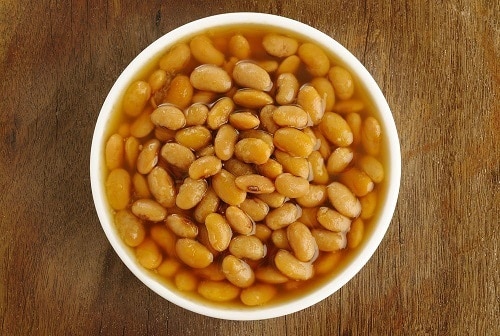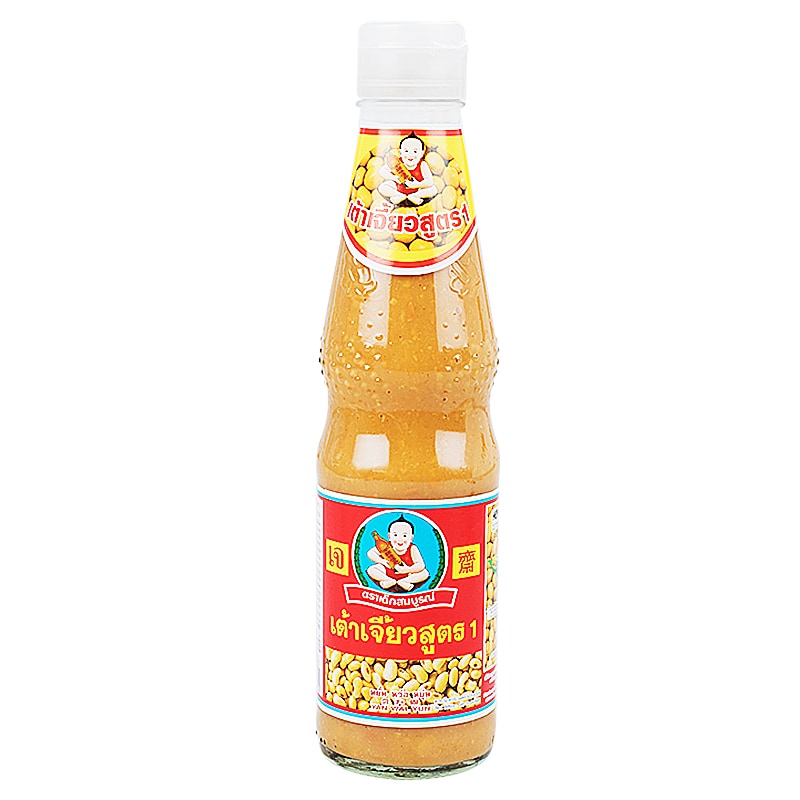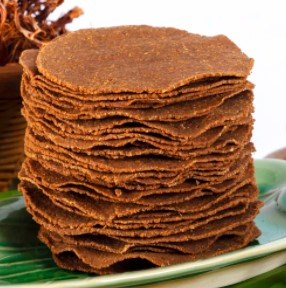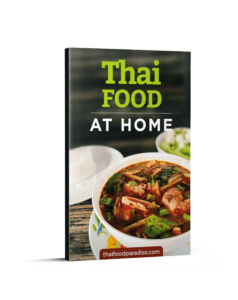All About Fermented Soybeans in Thai Cooking

When you expand your repertoire of Thai dishes and begin to find out the ingredients used, you’ll typically encounter some unexpected things. Fermented soybeans was one of those things for me (among many others). This article describes their use in Thailand’s cuisine.
Thai Fermented Soybean Paste

This delicious yellow soybean paste known as tao-jeow (เต้าเจี้ยว) features heavily in a classic Thai stir-fry sauce used for cooking many different vegetables. The recipe combines oyster sauce, fish sauce, and Thai soybean paste flashed rapidly in a hot wok with chilis and garlic. The vegetables should be almost swimming in the distinctly earthy sauce, which is one of my favourite tastes in the world.
It was another sweltering day in Chiang Mai. I’d just finished an iced coffee and felt a bit peckish. Walking around inside the old city’s ancient walls, I couldn’t decide what to eat. Then, I saw a chef cooking away on a roaring hot wok outside a restaurant on Moon Muang Road and I knew straight away what I wanted: stir-fried morning glory.
Run by a friendly Thai Chinese family, this was a frequent eating haunt during my long-term visits to Chiang Mai. On this particular day, it was one of my first visits to the city and I wasn’t there long. I decided to ask the smiling old woman what makes this stir-fried dish so addictively sweet, salty, and earthy. She pointed to a glass jar of Healthy Boy soybean paste, and at that very moment, I felt inspired to go and cook the dish myself.
I waited until I returned to Ireland and sourced some of the yellow soybean paste. I cooked the dish and it was almost the same as it was in Thailand. I had actually tried cooking it once before but it tasted nowhere near as good. The reason? I didn’t know about this addictively earthy sauce that is crucial for Thai stir-fried veggies.
The delicious paste is made from a combination of yellow soybeans, salt, and water. It’s very common in Chinese food too. I only ever advocate the Thai brand known as Healthy Boy when it comes to buying yellow fermented soybean paste for Thai dishes. If you want to get the paste and attempt some Thai stir-fried vegetable yumminess, you can buy 12 bottles here.
Northern Thai Tua Nao (Fermented Soybean Disks)

Even lesser-known still are tua nao. These sheets of fermented soybean are crucial in many northern Thai curries and chili dips. In fact, you can kind of think of them as bringing to northern Thai food what shrimp paste brings to southern Thai food, which is a savory, salty, and vibrant hit.
Locals in Norhtern Thailand have been making this ancient condiment for hundreds of years by combining fermented soybeans with salt, chili, and garlic and letting it dry out in the sweltering Thai sun.
One great thing about tua nao disks is that they work well as a replacement for shrimp paste for vegetarians or people allergic to shrimp. In fact, locals regard tua nao as a meat substitute, providing protein to people who can’t afford meat or don’t want to eat it. So we have two functions for these disks: as a snack in themselves and to enhance the flavour of other dishes.
The problem with tua nao is one of availability. I have never seen them here in Ireland in any of the Asian grocery stores. I typically bring home some from trips to Thailand but that’s not an option you may have. I tried sourcing some online but had little success.
Thankfully, having scoured the Internet for a recipe, I found a terrific resource from someone who figured out how to make tua nao at home. Better still, it doesn’t seem overly complicated, having read through it in its entirety. Here is the recipe.
Closing Thoughts
Thai food is full of surprises. For me, one of the earliest of those surprises in my introduction to Thai cuisine was how prevalent fermented soybeans are in Thai cuisine. I hope this article serves as a useful resource. I’d be curious to know if you have heard of tua nao: please leave a comment below.
I lived in Thailand for a few years during my 20s during which time I fell in love with Thai food. Along with my Thai partner, I cook and eat tasty Thai dishes 3 or 4 times per week. I’m here to bring you recipes, Thai food tips, and suggested cookware for making Thai food.
